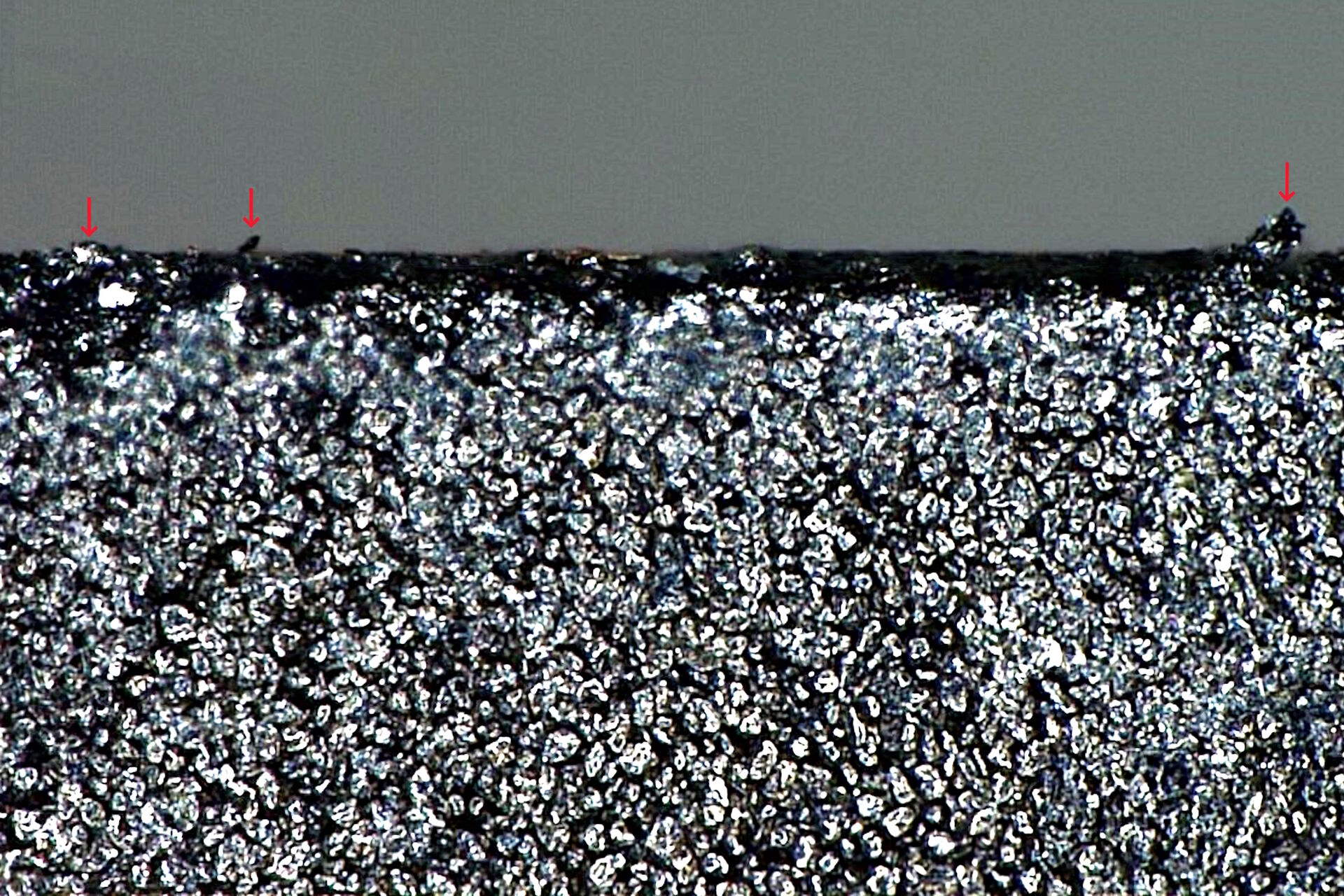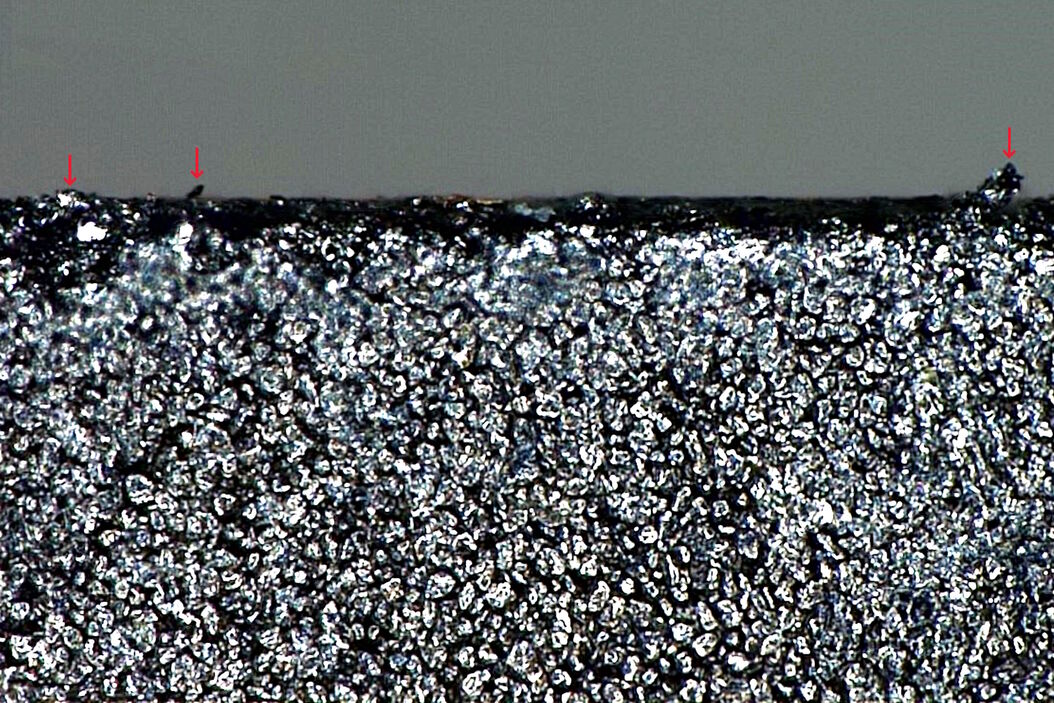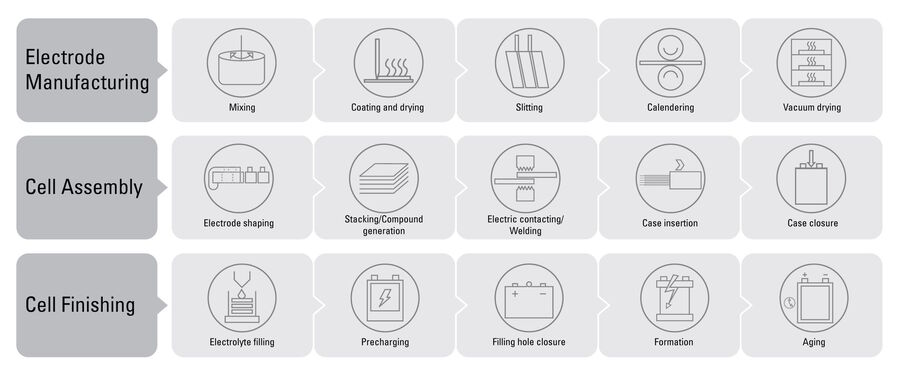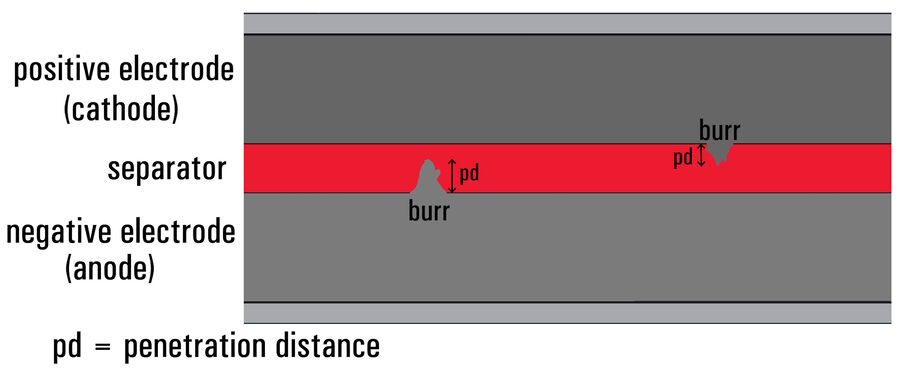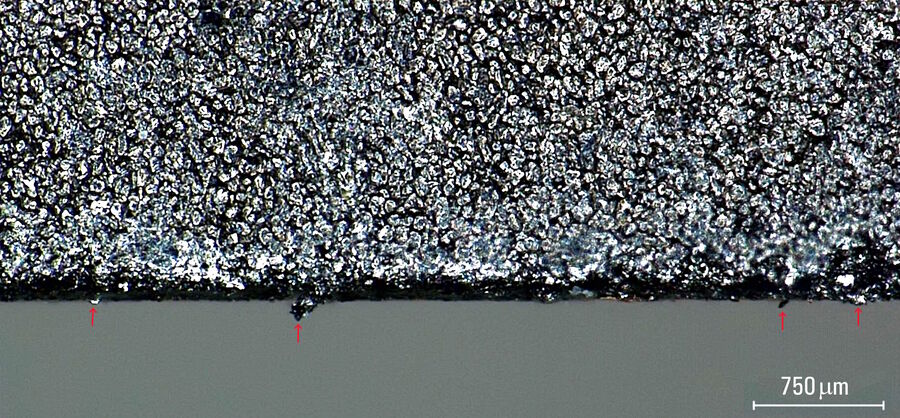Burr detection on battery electrodes
Burrs are unwanted metallic protrusions, usually extending from the edges of the battery electrodes. They can result from cutting during the separation process or welding of current collectors when batteries are manufactured. Burrs can be harmful, because they can tear or cut the separator layer of the electrodes. Problems like thermal runaway and short circuits between the positive (cathode) and negative (anode) poles of the battery can result [1,2]. Therefore, it is important to have solutions for efficient at-line inspection during battery production for the detection and analysis of burrs.
Why is burr detection necessary?
As mentioned above, burrs can cause batteries to have a reduced performance or even to fail, so their presence must be checked carefully during manufacturing. It can be difficult to avoid the generation of burrs during the slitting and electrode shaping process of battery production (refer to electrode manufacturing and cell assembly of figure 1), due to misalignment or degradation of tools. Therefore, burr detection and analysis is a crucial part of the inspection and quality control [1-3].
Quality control (QC) during battery production requires visual inspection to be performed at critical steps during production of battery components to ensure that specifications are being met.
Detection of burrs at battery electrode edges during manufacturing is important, because burrs with a certain size can damage the separator between the anode and cathode electrodes and lead to short circuits (refer to figure 2). Therefore, their size must be analyzed to determine if they have a low or high potential to cause damage to the battery system. Section 5.3.6.2 of the IEEE 1625 standard [4] recommends burr measurement and comparison to the separator thickness tolerance limit. Burr inspection is normally carried out by observing the edges or sides of electrodes with optical microscopy.
If burrs with a critical length are found to occur during inspection, then some processes may need to be adjusted and tools like roller knifes need to be checked, adjusted, or exchanged before further production.
Methods for burr detection and analysis
Detection and analysis of burrs on battery electrodes and other components should be done in an efficient and reliable way. It can be achieved with at-line visual inspection during battery production using an optical microscope. The critical burr size significantly determines the performance level of the optical microscope needed.
The appropriate microscope should ensure fast, efficient, reliable, and accurate burr detection. Some important factors to consider are illumination and contrast methods, resolution, magnification, fast capture and storage of images, easy access to stored data, and availability of practical measurement tools [5,6,7].
Choosing the proper illumination for detecting burrs during battery production can be important. Depending on the size of the burrs, different illumination methods [7], such as ring light, near vertical, diffuse, and polarization, could be used to enable more accurate and reliable detection. Polarized light can help improve contrast with respect to the background when observing the edges of electrodes. Diffuse illumination may reduce glare from metallic burrs, simplifying detection. The inspection microscope should also provide easy access to stored images and measurement data of burrs.
For an inspection microscope to make rapid and reliable burr detection during electrode inspection possible, it should:
- Not require sample preparation
- Enable optimal visualization of burrs via the most appropriate illumination (from a variety of illumination options)
- Allow practical and accurate image analysis via an easy-to-use software
- Make the documentation and sharing of inspection results straightforward.
Burr detection and analysis with Leica inspection solutions
Users can speed up the production process and improve battery quality with the help of Leica microscope solutions [5-7]. The appropriate microscope depends on the critical burr size which needs to be detected and the type of inspection, e.g., whether at-line or off-line inspection. Also for failure analysis and R&D, burr detection can be necessary.
Normally, for reliable and efficient at-line inspection concerning the detection of burrs larger than 15 µm, the Emspira 3 digital microscope would be a good choice. The Emspira 3 can be used for efficient at-line inspection.
For rapid and reliable at-line and off-line inspection to detect burrs larger than 2 µm, then the DVM6 digital microscope is more appropriate, as it offers higher resolution and magnification. Applications concerning burr detection during failure analysis and R&D can also be addressed with the DVM6.
In some cases, even burrs as small as 0.6 µm may need to be detected and analyzed whether for at-line or off-line inspection, failure analysis, or R&D. For this demand, then either the DM8000 M or DM12000 M compound microscope would provide the performance required.
Summary and conclusions
Burr detection during production of batteries is an important part of the quality control (QC). Burrs on battery electrodes can cause short circuits, thermal runaway, and reduced battery performance and lifetime. Therefore, fast and accurate identification of burrs which have the potential to damage battery systems is key to maintain the desired battery performance and minimize risk of failure. It may also help reduce waste, such as materials for electrodes, and improve efficiency and cost effectiveness. An optical microscope combined with the proper choice of illumination can provide a rapid and reliable method to identify and analyze burrs.
References
- G. Qian, F. Monaco, D. Meng, S.-J. Lee, G. Zan, J. Li, D. Karpov, S. Gul, D. Vine, B. Stripe, J. Zhang, J.-S. Lee, Z.-F. Ma, W. Yun, P. Pianetta, X. Yu, L. Li, P. Cloeten, Y. Liu, The role of structural defects in commercial lithium-ion batteries, Cell Reports Physical Science (2021) vol. 2, iss. 9, 100554, DOI: 10.1016/j.xcrp.2021.100554.
- X.-Y. Yao, S. Saxena, L. Su, M.G. Pecht, The Explosive Nature of Tab Burrs in Li-Ion Batteries, IEEE Access (2019) vol. 7, pp. 45978-45982, DOI: 10.1109/ACCESS.2019.2909018.
- H.H. Heimes, A. Kampker, C. Lienemann, M.A. Locke, C. Offermanns, S. Michaelis, E. Rahimzei, Lithium-Ion Battery Cell Production Process, 3rd Ed. (PEM of RWTH Aachen and VDMA, 2018, Frankfurt am Main) ISBN: 978-3-947920-03-7.
- IEEE 1625-2008 Standard for Rechargeable Batteries for Multi-Cell Mobile Computing Devices, IEEE Standards Association (IEEE SA).
- J. DeRose, Digital Inspection Microscope for Industrial Applications: How to choose the right microscope which helps users achieve efficient workflows, Science Lab (2023) Leica Microsystems.
- M. Doppler, How to Use a Digital Microscope to Streamline Inspection Processes, Webinar on-demand, Science Lab (2021) Leica Microsystems.
- J. DeRose, M. Doppler, Microscope Illumination for Industrial Applications: How to select the appropriate light source for microscope inspection, Science Lab (2023) Leica Microsystems.
Related Articles
-
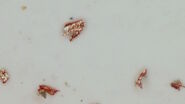
Battery Particle Detection During the Production Process
How battery particle detection and analysis is enhanced with optical microscopy and laser…
Apr 03, 2024Read article -
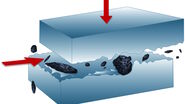
Key Factors for Efficient Cleanliness Analysis
An overview of the key factors necessary for technical cleanliness and efficient cleanliness…
Jan 03, 2024Read article -
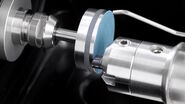
Cross-section Analysis for Electronics Manufacturing
This article describes cross-section analysis for electronics concerning quality control and failure…
Nov 27, 2023Read article
